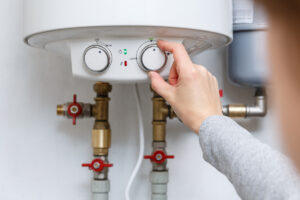
Let’s go over some common plumbing questions and their answers to keep you better informed about your plumbing woes.
Plumbing issues can range from minor inconveniences to significant problems that require immediate attention. Homeowners often encounter similar issues and have common questions regarding their plumbing systems. In this blog, we’ll discuss three frequently asked plumbing questions and provide answers to help you understand and address these common concerns.
Why Is My Toilet Running Constantly?
A running toilet is not only annoying but can also lead to a significant increase in your water bill. There are several potential reasons why your toilet might be running continuously:
- Flapper Valve Issues: The flapper valve is responsible for controlling the flow of water from the tank to the bowl. If it doesn’t seal properly, water will keep flowing into the bowl, causing the toilet to run continuously. This can be due to the flapper being worn out or improperly aligned.
- Float Problems: The float in the toilet tank controls the water level. If the float is set too high, it will cause the water level to rise above the overflow tube, resulting in a continuous flow of water. Conversely, if the float is set too low, the toilet may not flush effectively.
- Chain Issues: The chain that connects the flapper to the flush handle can sometimes be too long or too short. If it’s too long, it can get caught under the flapper, preventing it from sealing properly. If it’s too short, the flapper might not lift enough to allow a full flush.
Solution: To fix a running toilet, first, check the flapper valve. If it’s worn or damaged, replace it with a new one. Adjust the float to ensure it’s set at the correct level, typically about an inch below the top of the overflow tube. Finally, make sure the chain has the appropriate slack—just enough to lift the flapper without getting stuck.
Why Does My Water Heater Not Provide Enough Hot Water?
A lack of hot water can be inconvenient, especially during colder months. If you’re experiencing this issue, there could be several reasons behind it:
- Sediment Buildup: Over time, minerals and sediment can accumulate at the bottom of your water heater tank. This buildup can reduce the efficiency of the heating elements and decrease the available hot water supply.
- Thermostat Issues: The thermostat controls the temperature of the water heater. If it’s set too low, you won’t get enough hot water. Additionally, a malfunctioning thermostat may fail to heat the water to the desired temperature.
- Faulty Heating Elements: In electric water heaters, the heating elements can wear out over time, reducing the unit’s ability to heat water effectively. In gas water heaters, the burner or pilot light may have issues.
- Inadequate Tank Size: Sometimes, the water heater is simply too small to meet the household’s demands, especially if there are frequent high-usage activities like showers, laundry, and dishwashing occurring simultaneously.
Solution: Start by flushing the water heater to remove any sediment buildup. This maintenance task can improve efficiency and prolong the life of the heater. Check the thermostat settings and adjust them if necessary, typically setting it to around 120°F for optimal performance. If you suspect an issue with the heating elements or burner, it’s best to call a professional plumber to inspect and replace any faulty components. If your water heater is too small for your needs, consider upgrading to a larger unit or installing a tankless water heater for continuous hot water.
Why Do I Have Low Water Pressure?
Low water pressure can be a frustrating issue, making daily tasks like showering or washing dishes take longer and be less effective. Several factors can contribute to low water pressure in your home:
- Mineral Deposits: Just like sediment can accumulate in your water heater, mineral deposits can build up inside your pipes over time. This can restrict water flow and reduce pressure.
- Leaks: A hidden leak in your plumbing system can significantly reduce water pressure. Even a small leak can divert water away from your fixtures, leading to noticeable drops in pressure.
- Pressure Regulator Issues: If your home has a pressure regulator, a malfunctioning unit can cause low water pressure. Pressure regulators are designed to control the pressure of water coming into your home. If it fails, it can either let too much or too little water through.
- Municipal Supply Problems: Sometimes, the issue isn’t with your home’s plumbing but with the municipal water supply. Maintenance work, water main breaks, or other issues can temporarily reduce water pressure.
Solution: Begin by checking if the low water pressure affects all fixtures or just specific ones. If it’s localized, the issue might be with a particular faucet or showerhead, which can be cleaned or replaced. If it’s a broader problem, check for leaks by observing your water meter. If it moves when all water is turned off, you likely have a leak that needs professional attention. For issues with the pressure regulator or persistent low pressure affecting the entire house, contact a plumber to assess and address the problem.
Call Mahon Plumbing Today
If you still have more questions regarding your plumbing, we here at Mahon Plumbing are here to help. We have been serving the wider Baltimore area since 1994, so we have 25 years of experience to back up our fantastic service! Call us at our Baltimore location at 410-766-8566 or our Pasadena location at 410-636-7944. Be sure to keep up with us on social media by following us on Facebook or Twitter.
